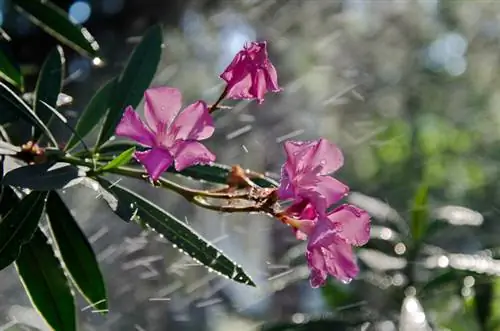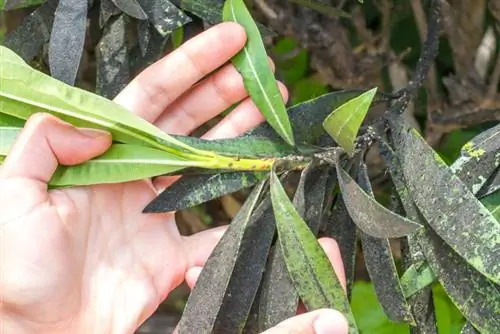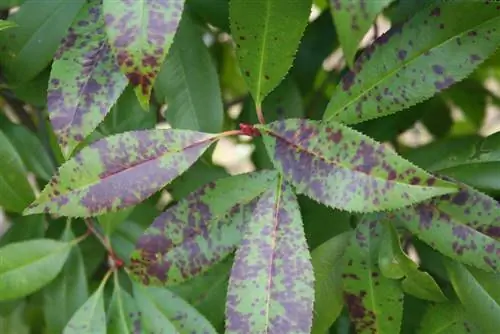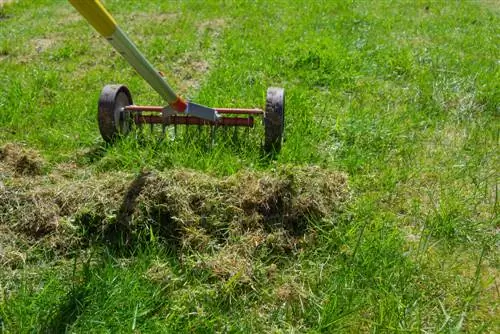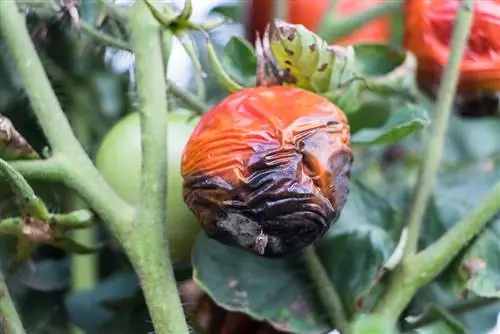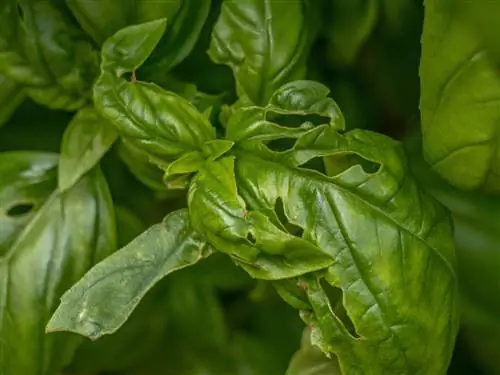- Author admin [email protected].
- Public 2023-12-16 16:46.
- Last modified 2025-01-23 11:20.
Oleander is known to be very susceptible to certain diseases or pest infestation. Some diseases can hardly be avoided no matter how much effort you put in, because they are inherent in almost every oleander and break out quickly under the right conditions. This type of oleander disease includes oleander canker caused by the bacterium Pseudomonas, the first signs of which are often brown to black spots on the undersides of the leaves.

Why does my oleander have black spots?
Black spots on oleander leaves can be caused by fungal infections, scale insects or aphid infestations, or oleander canker (Pseudomonas). Depending on the cause, measures such as dryness and warmth, pest control or pruning may be necessary.
Fungal Infection
However, you don't have to fear the worst for every black spot, because in many cases black leaves are an indication of a more harmless fungal infection. This occurs particularly often when the leaves of the oleander become wet and cannot dry quickly enough or when the oleander is left cool for too long in high humidity. For this reason, such black spots often appear during or after the shrub has overwintered.
- First collect affected leaves and dispose of them with household waste (do not put them in the compost!).
- Observe the diseased oleander and isolate it from other plants.
- Provide a dry and warmer location.
- Only cut back the bush if the fungus also extends to the shoots.
- Treat the oleander with a fungicide if the infestation is severe.
Scale or aphid infestation
If the black on the leaves can be easily wiped off with your fingers, it is probably a sooty mold fungus. In almost all cases, this is an indication of a pest infestation, primarily aphids or scale insects. Both insects secrete a sweet secretion (the so-called “honeydew”), which in turn serves as food for the sooty mold fungus. In order to effectively combat the sooty mold fungus, you must also eliminate the pests that cause it. So make sure that scale insects and aphids no longer feel too comfortable on your oleander, then the sooty mold fungus will soon be a thing of the past.
Oleander crab (Pseudomonas)
Oleander cancer is often manifested by knobby growths on the shoots as well as black or dark leaf spots that are surrounded by a light edge. This disease is caused by Pseudomonas bacteria and spreads quickly. The disease is not necessarily fatal, but can only be treated with vigorous pruning.
Tip
If you are unsure about the cause of the black leaf spots, just wait and observe the oleander - you can always cut it off if the worst comes to the worst.

